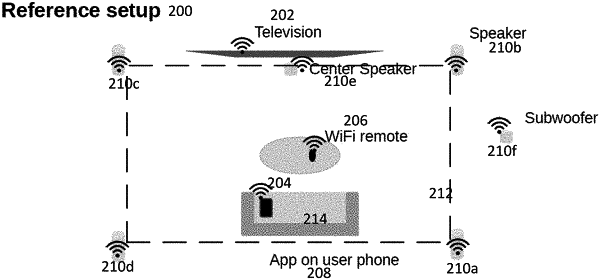| CPC H04N 21/44218 (2013.01) [H04H 60/45 (2013.01); H04N 21/4432 (2013.01); H04N 21/4436 (2013.01); H04N 21/4666 (2013.01)] | 20 Claims |

|
1. A computer implemented method, comprising:
executing a collection routine at regular intervals to gather raw data from a plurality of sensors, wherein executing the collection routine comprises varying a respective signal strength and a respective time period of two or more of a plurality of transmitters;
receiving results of the collection routine in a form of the raw data from the plurality of sensors;
storing the received results in a central data repository;
setting a device remote in a low-power mode;
analyzing the stored sensor data to determine when a television is turned on or off;
when the television is determined to be turned on,
using a WiFi radio of the television to initially scan for a potential presence of one or more humans within a predetermined geographical range based on a detection of receiving multiple signals from a first transmitter of the plurality of transmitters substantially simultaneously through a second transmitter and a third transmitter, wherein the first transmitter is located in a first device, the second transmitter is located in a second device, the third transmitter is located in a third device, the first device, the second device, and the third device are placed at different three-dimensional locations around the television and in a plane at a same height, wherein the first device includes a speaker connected to the television and located at a front of viewing space of the television; and
when the one or more humans are determined to he potentially present within the predetermined geographical range, executing a first action; and
when the television is determined to be turned off,
executing a second action.
|